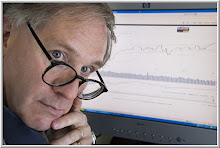
Interestingly, Thursday's drop of over 1% on SPY occurred with an equity put/call ratio of only .65, one of the lowest readings we've seen on a day with such a drop since March, 2003 (N = 803).
When we've had a down day in SPY of more than 1% (N = 73), the market two days later has averaged a gain of .28% (37 up, 36 down). That is stronger than the average two-day gain of .12% for the sample overall (437 up, 366 down).
When we divide the sample in half based on equity put/call ratios, however, a pattern emerges. A large SPY drop with a low put/call ratio, such as we saw on Thursday, results in an average gain of only .02% (17 up, 20 down) two days later. When the SPY drop occurs with a high put/call ratio, we see an average change in SPY of .56% (20 up, 16 down).
Returns appear to be superior when declines are accompanied by fear and pessimism--something we didn't see on Thursday.




